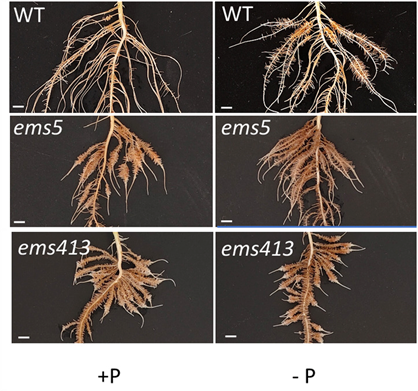
Bidirectional root-shoot signaling via CCR1 regulates cluster root and nodule development in legumes
Plant Science Research WeeklyLegume plants are renowned for their ability to form symbiotic relationships with nitrogen-fixing bacteria (rhizobia) in specialized root tissues called nodules. This symbiosis enables the conversion of atmospheric nitrogen into ammonia, a form of nitrogen that plants can readily use for growth. This…

Uncovering the kinase switch to coordinate symbiosis and immunity
Plant Science Research WeeklyBiological nitrogen fixation is a vital natural process that converts atmospheric nitrogen into bioavailable forms, enabling its assimilation into essential biomolecules such as amino acids and nucleic acids. This unique capability is primarily carried out by specialized microbes, often through their…
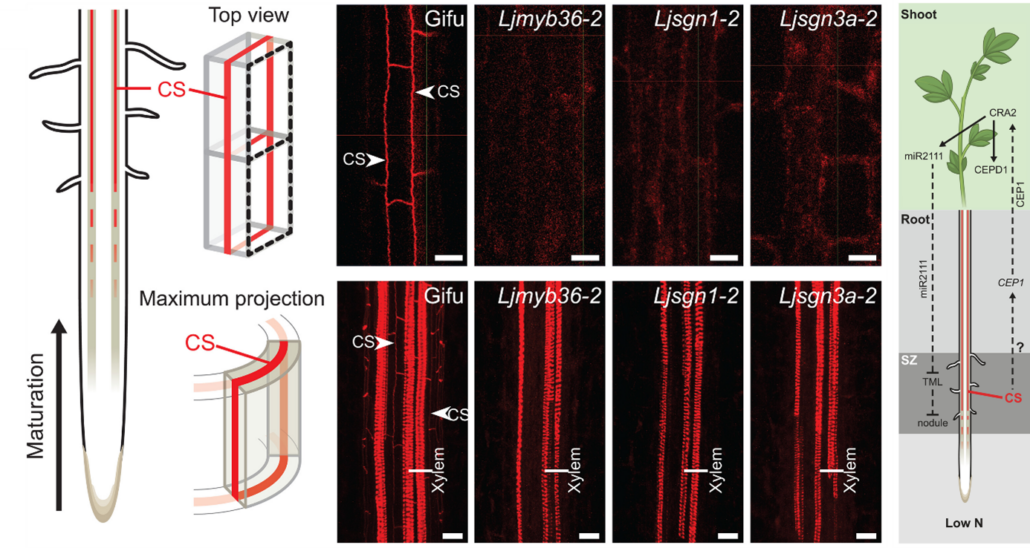
The hidden architecture of symbiosis: Casparian strips in root and nodule integration
Plant Science Research WeeklyThe Casparian strip (CS), a lignin-rich apoplastic barrier in the root endodermis, forms early in development and regulates solute flow between the soil and the vasculature. It allows plants to control ion uptake, defend against pathogens, and coordinate developmental signals. While its functions in…
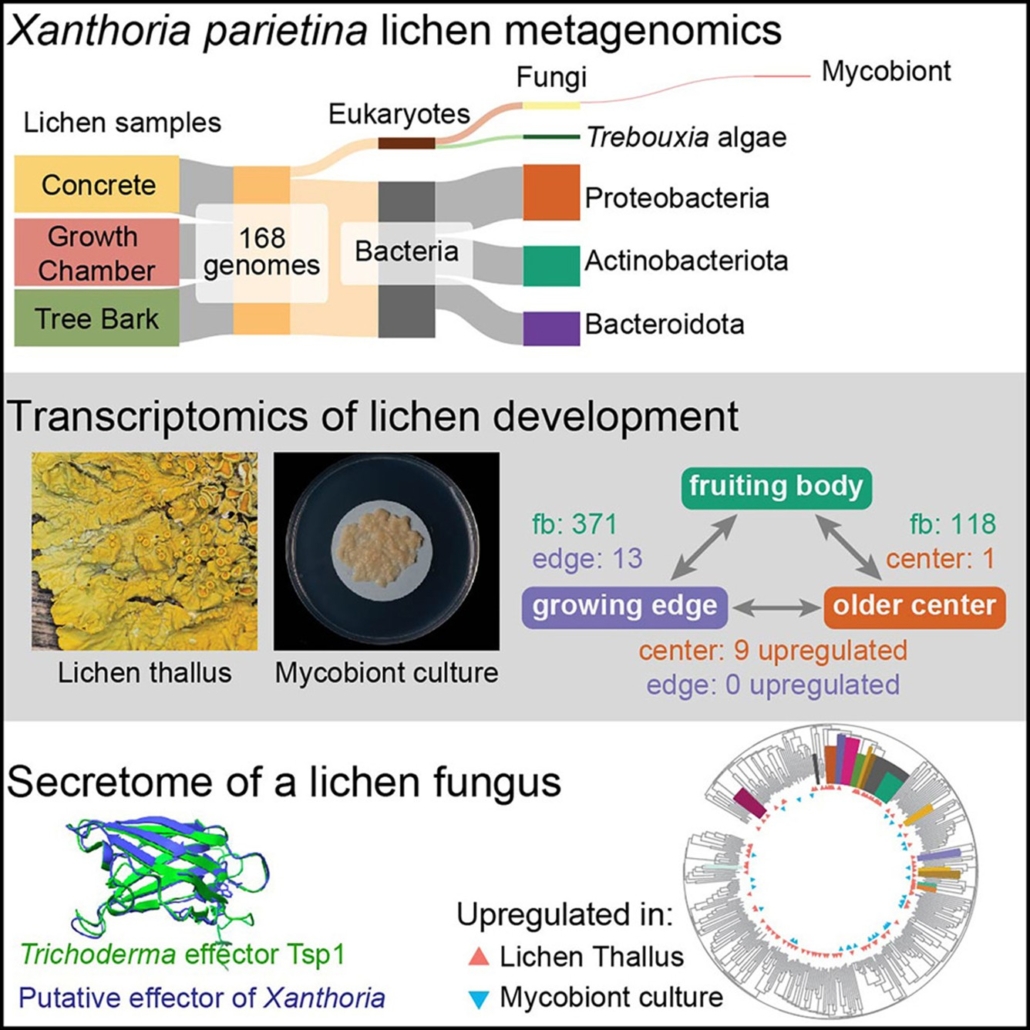
Symbiotic secrets: A multi-omics exploration of the lichen Xanthoria parietina
Plant Science Research WeeklyLichens are complex symbiotic organisms formed by algae or cyanobacteria living within the filaments of multiple fungal species. This unique partnership, which is both stable and self-replicating across generations, represents one of the most successful lifestyle strategies in the biological world. Lichens…
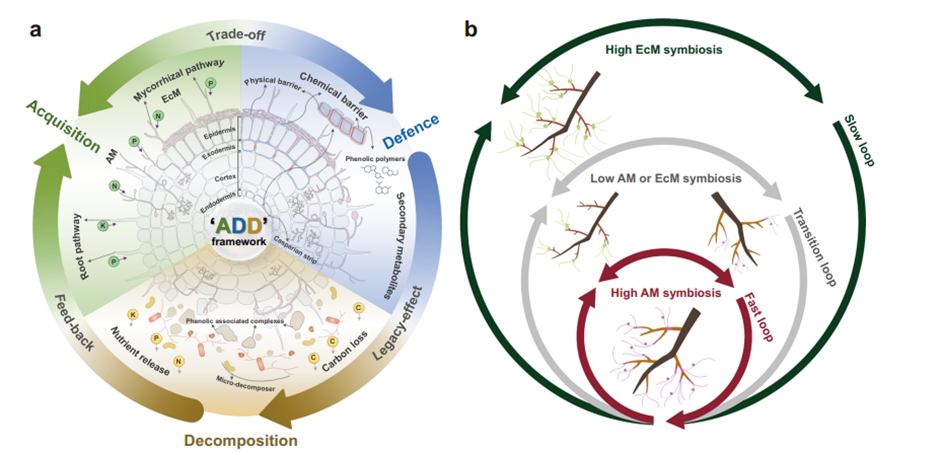
Unveiling root trait syndromes in trees: Evolutionary insights into mycorrhizal partnerships
Plant Science Research WeeklyPlants, particularly long-lived trees, need to balance nutrient acquisition, herbivore and pathogen defence, and ultimately organic matter decomposition. The intricate relationship between these processes is crucial for the survival and growth of trees over their extended lifespans. Zheng et al. investigated…
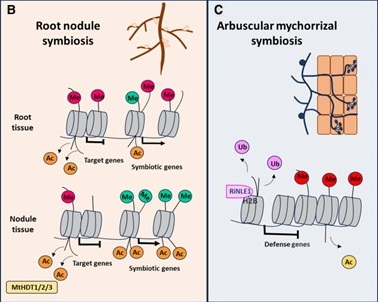
Review: Root development and symbiosis: an epigenetic perspective
Plant Science Research WeeklyRoots do not grow in isolation but occupy a space inhabited by a variety of organisms. With certain fungi and bacteria, they form partnerships or symbiotic relationships that increase the plant’s nutrient uptake and assimilation. While the knowledge on the genetic programs required to establish these…
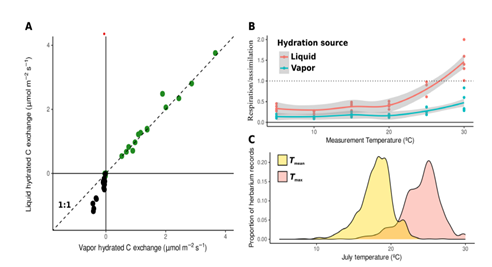
Hydration source determines carbon asymmetry and physiological activities in lichen-forming symbionts
Plant Science Research WeeklyMetabolic activities in symbionts are often described as physiologically synchronized, but sometimes, as in the case of coral bleaching, this synchrony can break down. This breakdown was observed in lichen by Meyer et al. when they examined the physiologies of Evernia mesomorpha fungal and algal components…
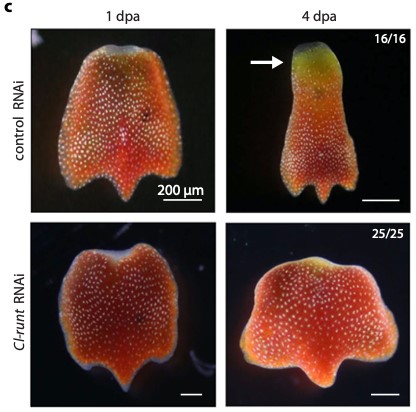
Coordinated wound responses in a regenerative animal-algal holobiont
Plant Science Research WeeklyMany animals such as corals and sea slugs host photosynthetic symbionts. Several studies have investigated how the host and symbiont coordinate their activities. This new study by Sarfati et al. explores how symbiotic green algae and their animal host, the flattened-worm Convolutriloba longifissura,…
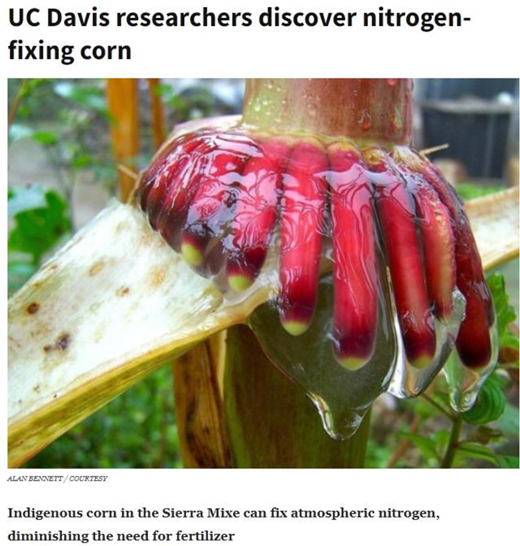
The Nagoya Protocol and nitrogen-fixing maize: Close encounters between Indigenous Oaxacans and the men from Mars (Inc.)
Plant Science Research WeeklyMost readers recognize the photograph of the amazing nitrogen-fixing maize, with its red, slimy aerial roots that nurture nitrogen-fixing bacteria. But I suspect few of us have thought about how this landrace came to the attention of the mainstream media, who owns the rights to it, and how it would be…

